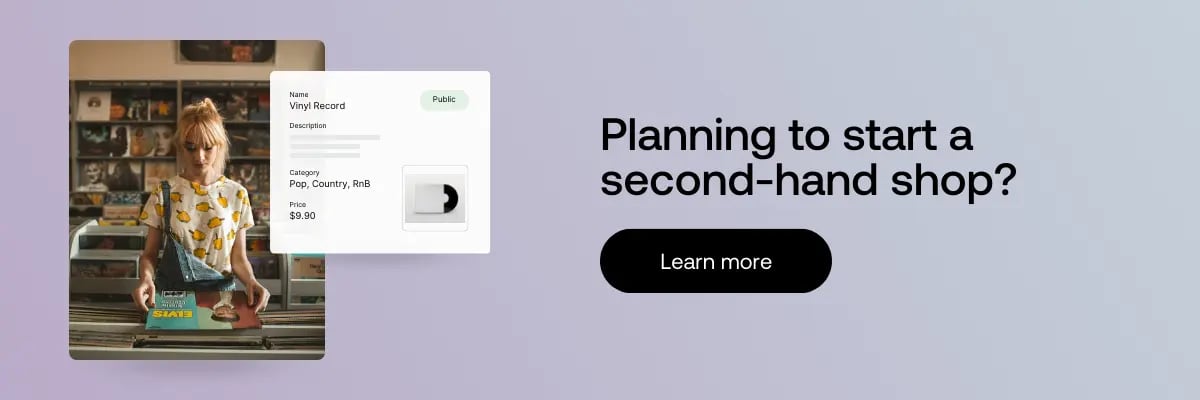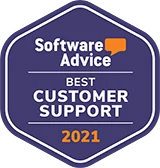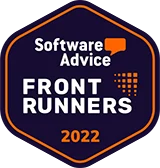Have you ever thought about how to maximize profits in your thrift store business? The thrill of discovering hidden treasures and turning them into lucrative sales is undeniable. In this blog post, we'll guide you through the process of how to price thrift store items for maximum profit, from understanding market value to implementing effective pricing strategies. Get ready to unlock the full potential of your thrift store.
Understanding the market value of items
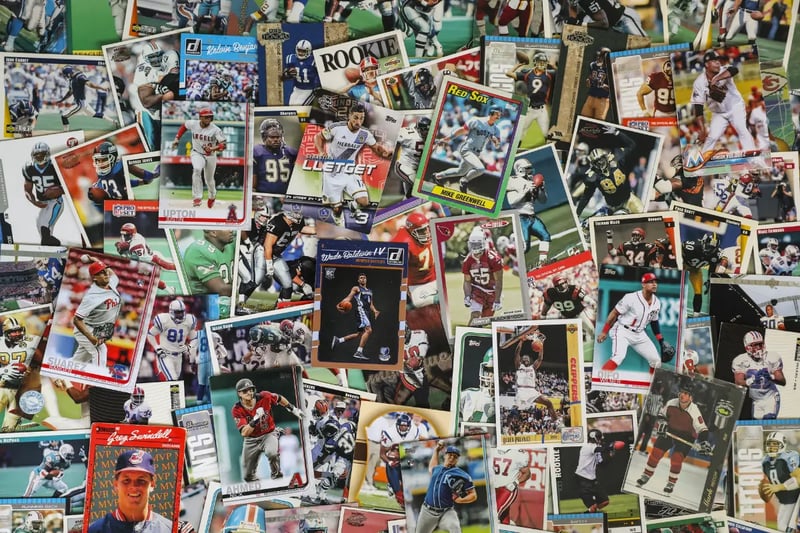
The first step in pricing thrift store items is understanding their market value. Grasping the actual value of secondhand goods helps set a fair price that attracts buyers and ensures good profit margins. If you're planning to open your own thrift store, knowing the right pricing is everything because your whole company's profitability is based on it.
The best items to resell for profit →
Researching retail prices of similar new items and comparing them with your thrift store merchandise is essential to determine the best price. It's important to note that charging half the retail price may not always be accurate. But don't worry, we'll delve deeper into assessing item condition and identifying unique features, which will help you price your items effectively.
Assessing item condition
The condition of an item plays a significant role in determining its value. To price items fairly and accurately, you must honestly assess their condition. Items are typically graded from "like new" to "poor". By providing a truthful account of an item, you'll build trust with your customers and ensure a smooth transaction.
Don't underestimate the value of rare finds. When pricing such items, it is crucial not to underprice them, even if the condition would leave room for improvement. A fair price for a rare item can result in a highly valued sale, boosting your profits and customer satisfaction.
Identifying unique features
In addition to assessing the condition of items, it's essential to identify any unique features that may increase their value. Designer labels, antique qualities, and distinct materials can significantly impact an item's worth.
When assessing the uniqueness of second-hand items, consider their rarity or any notable characteristics. If you're unsure of an item's value, don't hesitate to consult a specialist and have it priced by a professional. By recognizing the unique features of your thrift store items, you can set the right price and attract more customers.
Pricing strategies for thrift store items
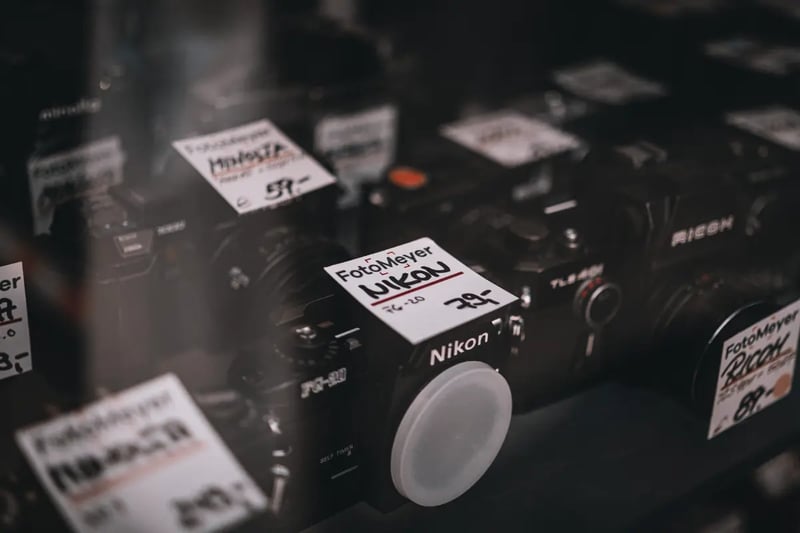
Now that you better understand what affects the resale value of your thrift store items, it's time to implement some pricing strategies. The pricing of thrift items has much in common with the classic pricing strategies, but sometimes, you may need to apply a slightly different approach. Three main strategies to consider are:
-
Percentage markdowns
-
Fixed pricing
-
Demand-based pricing
Each strategy has its advantages and can be effective in different situations. Let's dive into each of them.
Percentage markdowns
Percentage markdowns involve pricing items based on age and condition, with newer items priced closer to their price as new.
For example, one suggestion is to start at half of the initial price for selling pre-owned items. A 25 percent markdown from their original price is a good starting point for items that have been around for a few years. Remember to price newer items closer to their original cost while considering any exceptions like designer goods or vintage pieces.
Unused items, particularly those in their original packaging or with tags, can be priced higher and are more desirable to shoppers. There are instances where limited edition items and collectibles can even surpass their original price in the aftermarket.
Fixed pricing
Fixed pricing is another strategy that can be applied to maintain consistency and ease of shopping for your customers. The idea is that all products have the same price tag within one product category, e.g., Jeans. One of the significant benefits of this strategy is that it's simple and gives shoppers the chance to make bargain deals at a reasonable price. The approach works well for specific product categories with only minor product differences.
Predictability is definitely another benefit of this method, but the downside is that the model is quite inflexible, and you may be selling too cheaply. However, it's worth noting that a key aspect of the thrift store ethos is to support those less fortunate in our society, so sometimes potential profit loss isn't the primary concern.
The advantages of fixed pricing include:
-
Regular and foreseeable pricing
-
Eliminating the potential risks and expenses connected to frequent price alterations
-
Providing a pleasant shopping experience for your customers
-
Maintaining the pricing strategy requires less effort
Demand-based pricing
Demand-based pricing is a strategy that adjusts prices according to the demand and popularity of certain items or categories. This approach allows you to capitalize on trends and maximize your profits by setting prices based on the perceived value of items. This strategy works particularly well for rare items and collectibles with high resale value.
To implement demand-based pricing, you must actively monitor your items' demand and adjust prices accordingly. Keep an eye on individual items or categories, and be prepared to modify pricing strategies as needed to stay competitive and profitable.
Utilizing online resources for pricing
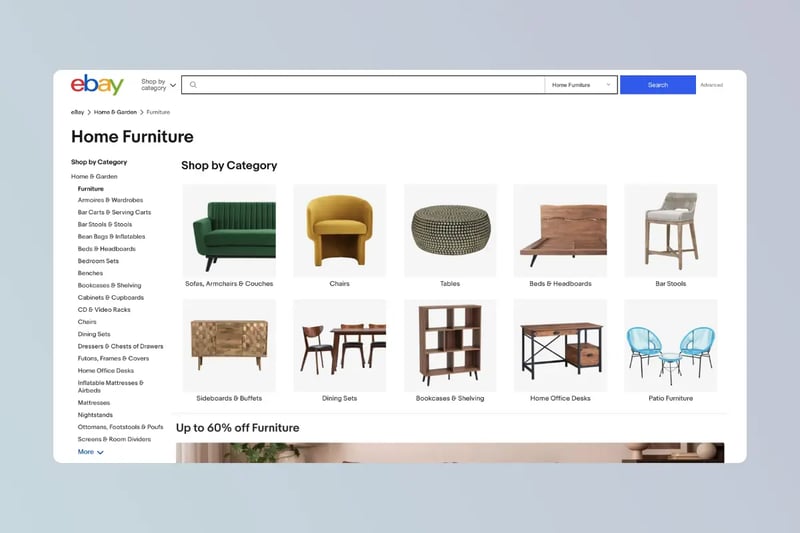
To further refine your pricing strategies, utilizing online resources like eBay and other resale platforms is crucial. These platforms allow you to gather pricing information and compare similar items, helping you set a fair price for your thrift store merchandise.
By assessing the competition on these platforms, you can gain insight into what people are willing to pay for similar items. This valuable information will assist you in making informed decisions about your pricing strategy, ensuring that you stay competitive while maximizing your profits.
Consignment shop considerations
An alternative to selling items directly through your thrift store is to consider consignment shops or even yard sales. Consignment shops offer the following benefits:
-
They sell items on behalf of the owner and share profits with them.
-
This option can be particularly beneficial for selling higher-value items.
-
It can result in a higher price than what could be achieved through a garage sale or a thrift store, even after the consignment fee is taken into account.
Remember that consignment shops may have their pricing strategies and requirements, so it's essential to consider these factors when deciding whether to sell your items through a consignment shop.
Balancing profitability and customer satisfaction
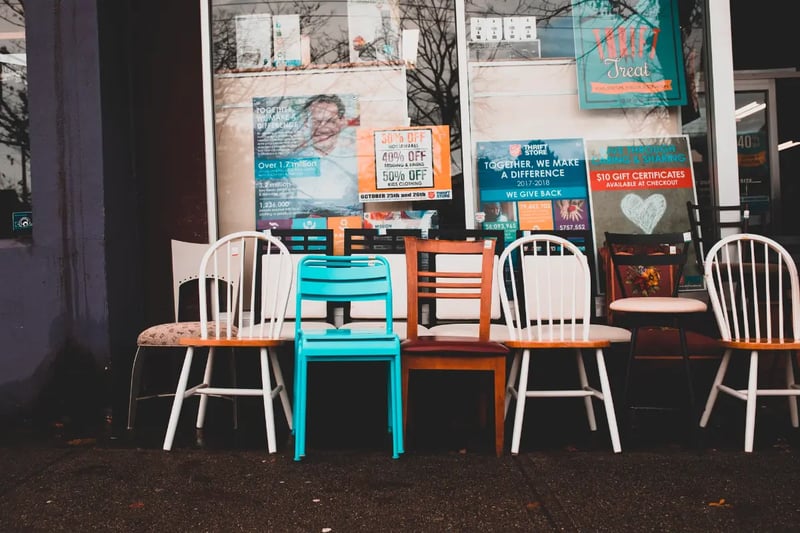
One of the most critical aspects of pricing thrift store items is striking a balance between profitability and customer satisfaction. Offering a good deal at fair prices and a pleasant shopping experience will attract more customers and ensure that they return to your thrift store.
When establishing prices, consider your typical customers' needs, preferences, and requirements to achieve this balance. Striking a balance between competitive pricing and business profitability is integral in fostering customer loyalty and ensuring the success of your thrift store.
Effective marketing and presentation
In addition to setting the correct prices, it's essential to market and present your items effectively. You can attract more customers and increase sales by highlighting their unique features, sharing sentimental stories, and maintaining a clean and organized store.
Don't underestimate the power of a compelling story behind an item. A sentimental story can significantly enhance the attractiveness of second-hand items to prospective purchasers, increasing its value and appeal. By effectively showcasing your items and creating an enjoyable shopping experience, you'll keep customers coming back for more.
A fast-growing trend is the online sale of second-hand goods. There's no reason thrift stores can't leverage the same e-commerce strategies as traditional online retailers. A well-designed online store is an excellent way to expand your potential customer base. Also, it provides a platform to highlight individual items, which might be challenging to do in a traditional brick-and-mortar thrift store setting.
Monitoring and adjusting prices
To stay competitive and maximize profits, monitoring and adjusting prices regularly is crucial. One advantage of this is that it enables you to remain flexible in a fluctuating market and adapt to evolving customer needs. Utilize strategies such as percentage markdowns, fixed pricing, and demand-based pricing to adjust prices as needed.
By staying on top of pricing trends and making informed adjustments, you can optimize your profits, ensuring the long-term success of your thrift store business and ultimately making more money.
Leveraging thrift store software for better pricing
Investing in thrift store software and inventory management systems can be a game-changer for second-hand retail businesses. These tools offer a comprehensive solution for sales tracking, inventory management, and consistent pricing across all sales channels. They enable you to leverage historical sales data, current market trends, and direct customer feedback to optimize sales, improve turnover rates, and boost profit margins. Here are some ideas on how to use the tools in your commerce software to help price your items better:
-
Observe your inventory: Managing inventory is fundamental to any retail software. By keeping track of your current stock and identifying which items are selling fast, thrift store software can assist shop owners in setting prices that reflect the demand and available stock of specific items.
-
Analyze historical data: Your software gathers sales data over time, which you can leverage to identify pricing trends for specific brands or categories. For example, if you notice that vintage T-shirts have been selling like hotcakes, it might be a good idea to bump up their price in the future.
-
Get automated pricing suggestions: Thrift store software can offer automatic pricing suggestions for new inventory items, considering various factors such as the item's category, brand, condition, season, and historical sales data.
-
Discounting and promotions: Software tools can assist you in overseeing discount periods. For example, if a product has been in stock for over a month without being purchased, the software could recommend a reduced price or alert staff to place it on a discount rack.
-
Reporting: By producing comprehensive sales reports, owners of thrift stores can obtain valuable insights into the most profitable items or categories. You can use this information to fine-tune your pricing strategies.
-
Bulk pricing: When dealing with items that are available in large volumes, such as books or CDs, the software can help in establishing pricing in bulk, simplifying the procedure and saving time.
-
Adaptive Learning: More advanced systems might employ machine learning algorithms to refine pricing suggestions based on ongoing sales data, customer behaviors, and external market trends.
To sum up, thrift store software is a crucial asset when setting the best prices for items, allowing you to make decisions based on data and insights rather than relying solely on intuition.
Summary
In conclusion, pricing thrift store items for maximum profit is a multifaceted process that involves understanding market value, assessing an item's condition, identifying unique features, and implementing effective pricing strategies based on various factors.
By utilizing online resources, balancing profitability and customer satisfaction, leveraging software tools, and marketing your items effectively, you can unlock the full potential of your thrift store business and reap the rewards of your efforts.
Frequently Asked Questions
How do I know if an item is valuable?
Identifying value items amongst a sea of options requires a blend of experience and industry-specific knowledge. It's essential to stay current with trends and continually educate yourself. Keep an eye out for lightly used items, jewelry, design, art, and luxury brands. Evaluate each item's condition to see if it's worth the potential value. And remember, don't get fooled by counterfeits.
How do I calculate the price of a second-hand item?
To estimate the price of a used item, consider the item's condition and use the 50%, 25-30%, or 10% rule as a guideline.
Starting at 50% of the original retail price is a solid benchmark for items in top-notch condition. 25-30% of the original retail price should work well for items in decent condition. Pricing items at 10% of the original price is appropriate for items in less-than-ideal condition.
How can I assess the condition of thrift store items?
Assessing the condition of thrift store items requires an honest description, grading them from "like new" to "poor". Careful and precise evaluation is necessary to provide accurate descriptions for buyers.
What online resources can I use to gather pricing information for my thrift store items?
eBay, Etsy, and other resale platforms can provide an excellent source of pricing information for items at your thrift store. Comparing similar items can help you determine the best prices for each item. You can also follow different subculture trends, for example, on social media or online forums. This is particularly important for identifying rarities in specific product categories, such as sneakers, art and antiques, watches, etc.


